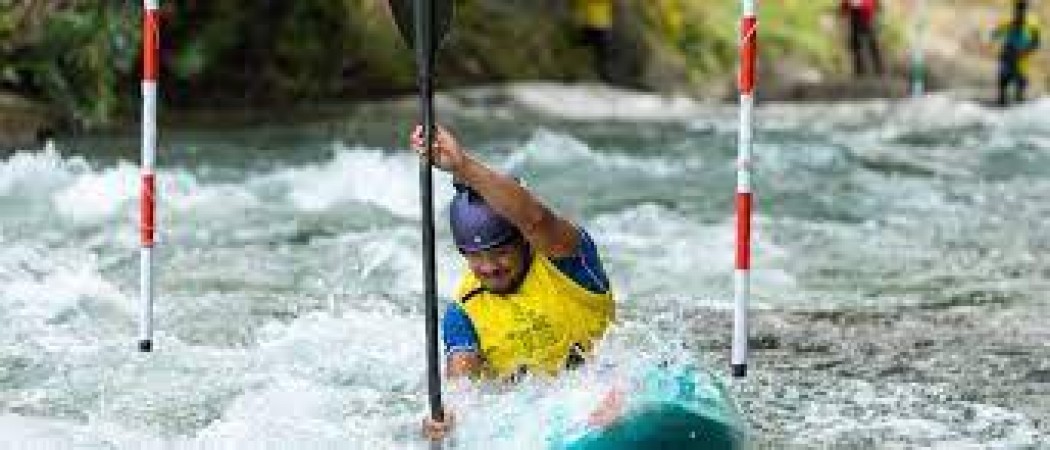
Canoeing and kayaking have long been revered as exhilarating water sports that combine skill, precision, and physical prowess. From tranquil lakes to raging rivers, these activities offer athletes and enthusiasts a unique way to experience the beauty of nature while testing their mettle against the elements. In this article, we will delve into the world of canoeing and kayaking, exploring the different disciplines within these sports, the history behind them, the equipment used, and the remarkable Olympians who have made their mark in these aquatic endeavors.
The History of Canoeing and Kayaking
The roots of canoeing and kayaking can be traced back thousands of years to the indigenous peoples of North America, Greenland, and Siberia. These watercraft were initially developed for transportation, hunting, and fishing purposes, reflecting the deep connection early civilizations had with water bodies. Over time, canoeing and kayaking evolved into recreational and competitive sports, capturing the attention of people worldwide.
Canoeing and Kayaking Equipment
Canoes and Kayaks
The primary difference between a canoe and a kayak lies in their design and the way they are paddled. Canoes are typically open-top boats designed to accommodate more than one person and are paddled using single-bladed paddles. On the other hand, kayaks feature a closed-top design where the paddler sits inside the boat with their legs extended forward, and they use double-bladed paddles for propulsion.
Paddles
Paddles play a crucial role in canoeing and kayaking, serving as the means of propulsion and steering. They come in various shapes and sizes, each optimized for specific disciplines and water conditions.
Safety Gear
Safety is of utmost importance in water sports. Participants in canoeing and kayaking should always wear personal flotation devices (PFDs) to ensure buoyancy in case of accidental capsizing. Helmets are essential for athletes engaged in whitewater disciplines to protect against potential head injuries.
Canoe Sprint
Rules and Format
Canoe sprint is a high-speed, flatwater discipline where athletes compete in various distances, including 200m, 500m, and 1000m races. The sport demands explosive power and impeccable technique to surge ahead of the competition.
Techniques and Training
Success in canoe sprint hinges on developing a strong paddle stroke, mastering the start, and maintaining an efficient body position throughout the race. Athletes undergo rigorous training regimes to enhance their strength, endurance, and speed..
Canoe Slalom
Rules and Format
Canoe slalom takes place on challenging, turbulent rivers, and athletes must navigate through a series of gates. The sport demands exceptional maneuvering skills and precise control over the boat.
Techniques and Training
Athletes in canoe slalom must possess excellent balance, quick reflexes, and the ability to read the water's flow. Training involves honing whitewater paddling skills and perfecting gate approaches.
Notable Canoe Slalom Olympians
Kayak Sprint
Rules and Format
Kayak sprint shares similarities with canoe sprint but is exclusive to kayaks. Athletes compete in various distances, and like canoe sprint, speed and technique are crucial for success.
Techniques and Training
The paddle stroke is the cornerstone of kayak sprint, and athletes strive to achieve optimal paddle entry and exit techniques. Additionally, mastering the art of steering and maintaining balance is essential for peak performance.
Notable Kayak Sprint Olympians
Kayak Slalom
Rules and Format
Kayak slalom is similar to canoe slalom but is specific to kayaks. Athletes face the challenge of navigating through gates in turbulent waters, showcasing their agility and precision.
Techniques and Training
Athletes must develop a deep understanding of whitewater dynamics and learn to adapt swiftly to changing conditions. Kayak slalom training involves repeated course runs and gate drills.
Notable Kayak Slalom Olympians
Similarities and Differences Between Canoeing and Kayaking
While canoeing and kayaking share the commonality of being water sports, their equipment, paddling techniques, and styles of competition differ significantly. Canoeing often involves teamwork and open boats, whereas kayaking is more individual-focused and features closed boats.
Health Benefits of Canoeing and Kayaking
Engaging in canoeing and kayaking provides numerous health benefits. These activities improve cardiovascular fitness, strengthen muscles, enhance flexibility, and foster mental well-being through the serenity of nature.
Canoeing, Kayaking, and the Environment
Water sports enthusiasts have a responsibility to protect the environment they cherish. Canoeing and kayaking organizations often promote eco-friendly practices to preserve the pristine beauty of waterways.
The Thrill of Olympic Canoeing and Kayaking
Olympic canoeing and kayaking events offer breathtaking spectacles of human athleticism and skill. Watching Olympians battle against the water's might is a thrilling experience for sports enthusiasts worldwide. Canoeing and kayaking have come a long way from their humble beginnings as essential tools for survival. Today, they stand as exceptional sports that challenge athletes to push their physical and mental boundaries. As we witness the prowess of Olympians in canoe sprint, canoe slalom, kayak sprint, and kayak slalom, we gain a deeper appreciation for the beauty and excitement of water sports.
Hockey India announces 18-member squad for Asian Champions Trophy 2023
Volleyball: A Universal Language of Unity and Friendship in the Olympics
MotoGP Finally to raise the Premium Accessibility at the Silverstone Race